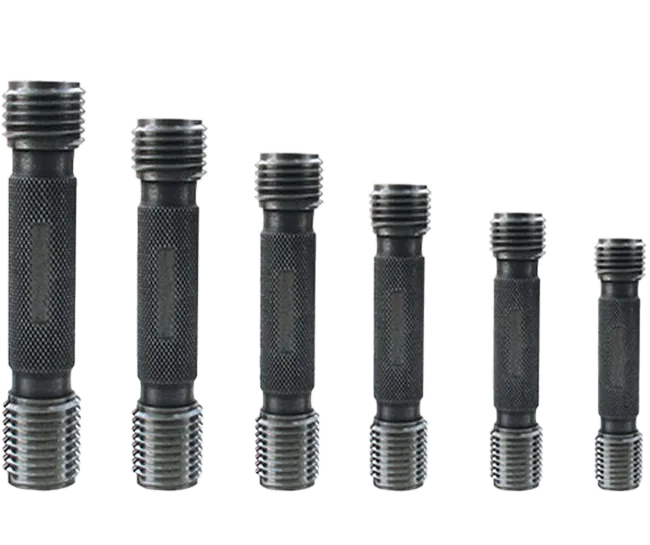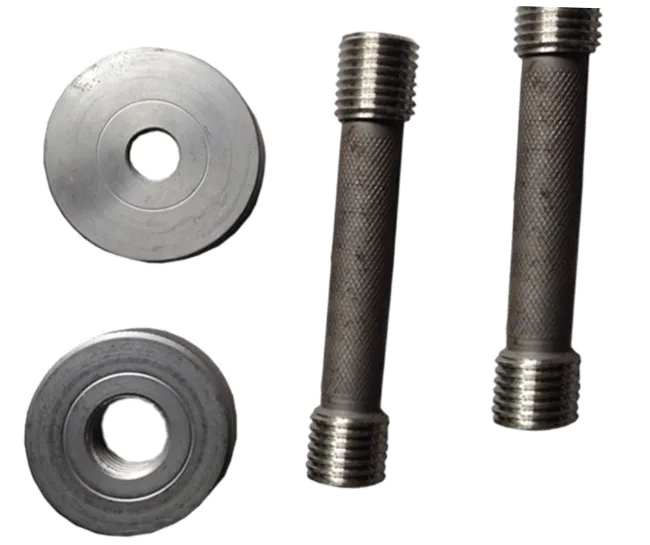Products Description
- Plug Gauge
- Definition: A gauge used to inspect internal dimensions such as hole diameters and slot widths. It is usually cylindrical or conical, consisting of a Go end and a No-Go end.
- Working Principle: The Go end should smoothly enter the inspected hole, while the No-Go end should not, so as to determine whether the hole diameter is within the specified tolerance range.
- Application Scenarios: Widely used in mechanical processing for rapid inspection of bolt holes, bearing holes, inner diameters of pipes, etc.
- Types: Including plain plug gauges, thread plug gauges, taper plug gauges, etc. Plain plug gauges are used to inspect smooth holes, and thread plug gauges are used to inspect internal thread sizes.
- Ring Gauge
- Definition: An annular gauge used to inspect external dimensions such as shaft diameters and outer diameters. It also has a Go end and a No-Go end.
- Working Principle: The Go end can fit over the inspected shaft, and the No-Go end cannot, thus determining whether the shaft diameter is qualified.
- Application Scenarios: Commonly used to inspect the outer diameters of bolts, shaft parts, and cylindrical workpieces.
- Types: Including plain ring gauges, thread ring gauges, etc. Plain ring gauges inspect smooth shaft diameters, and thread ring gauges inspect external threads.
- Go-No-Go Gauge
- Definition: A general term referring to gauges composed of a Go end and a No-Go end. Plug gauges and ring gauges are both categories of Go-No-Go gauges, in addition to snap gauges, etc.
- Working Principle: Based on the principle that "Go gauge passes, No-Go gauge does not pass", it quickly judges whether the workpiece size is within the qualified range without reading specific values.
- Application Advantages: Easy to operate and high in detection efficiency, suitable for quality inspection in mass production, and can quickly screen out unqualified products.




